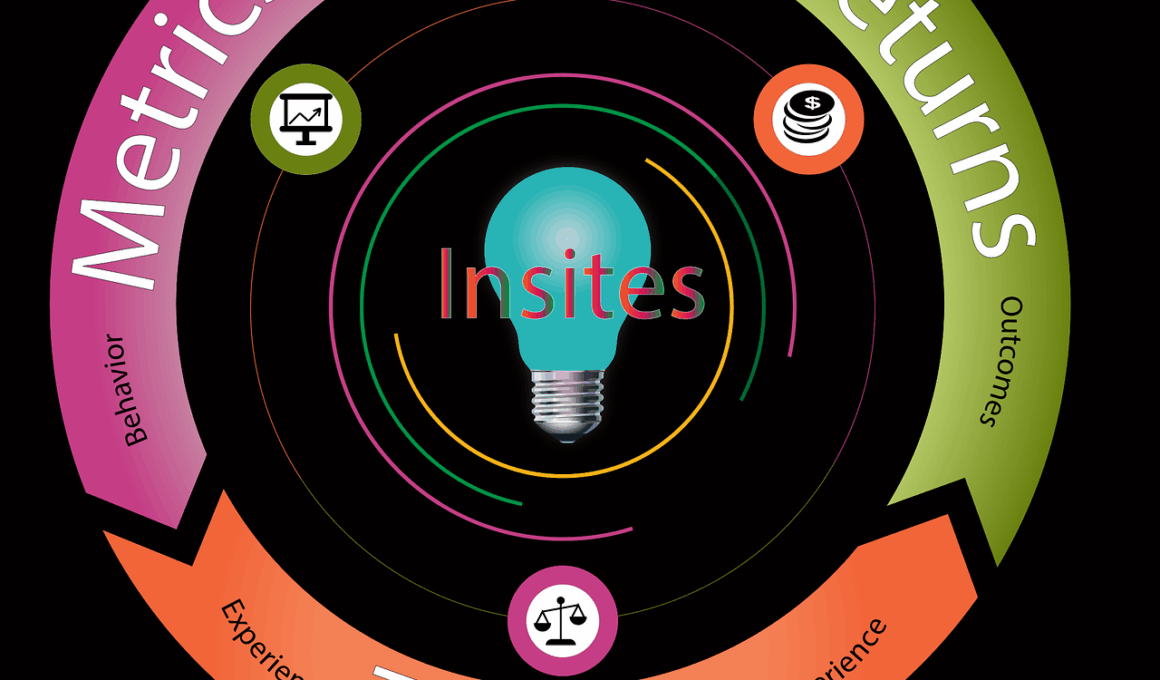Using Web Analytics to Personalize Marketing Strategies
Understanding your audience is crucial for effective marketing. Web analytics offer invaluable insights into user behavior, preferences, and demographics. By leveraging these data points, marketers can tailor their strategies to meet the specific needs of their target audience. For instance, data collected from website visits can reveal which products attract the most attention. This information allows for personalized marketing messages. Marketers can create segments based on user engagement, ensuring that the right message is delivered to the right people. Additionally, tracking user journeys can help identify drop-off points in the conversion process, highlighting areas for optimization. Another benefit of web analytics is the capability to conduct A/B testing, which compares different marketing approaches. This fosters an environment for continuous improvement. Ensuring that marketing strategies are agile and responsive to analytics can significantly enhance customer engagement and retention. With the right tools, marketers can gather real-time data and adapt their campaigns on the fly. Overall, web analytics serve as the backbone of a data-driven marketing strategy, driving personalization effectively.
Effective segmentation is key for personalized marketing strategies. By using web analytics, businesses can break down their audience into specific groups based on behavior and preferences. These segments allow for targeted marketing efforts that resonate more with potential buyers. For example, you might analyze data such as page visits, time spent on pages, or previous purchases to create specific user profiles. These insights guide marketers in crafting tailored messages that speak uniquely to each segment. Personalized content can significantly improve engagement rates as users feel valued and understood. Implementing variables like location or browsing history can further enhance segmentation. Moreover, analytics tools can help track the success of these personalized campaigns in real-time. Metrics such as engagement rates, click-through rates, and conversion data can inform future strategies. By continually refining segments based on user feedback and interactions, companies can increase retention and loyalty. Tailoring your marketing strategy using web analytics not only improves the customer experience but also drives higher ROI. Overall, harnessing segmentation’s power through analytics transforms the marketing approach from generic to personalized.
The Role of Data in Marketing Personalization
Data is the heart of personalized marketing strategies. Through web analytics, marketers can collect and analyze vast amounts of information about their audience’s behavior. This data includes metrics such as traffic sources, user demographics, and browsing patterns. Understanding these factors allows marketers to create targeted campaigns that resonate with their audience. For example, analyzing data from previous campaigns can reveal which messages performed best. With this insight, marketers can refine their upcoming strategies, focusing on what works. Additionally, keeping an eye on user engagement helps in adjusting content offerings. By analyzing feedback through surveys and customer interactions, brands can align their messaging with audience expectations. Web analytics also aid in predicting future behavior based on past interactions, enhancing proactive marketing efforts. This means that personalization is not just reactive; it can be anticipatory, allowing brands to meet customer needs before they even voice them. With comprehensive data analysis, businesses can foster relationships built on trust, creating a meaningful connection with their audience.
Automation plays a crucial role in leveraging web analytics for personalized marketing. Many analytics tools automate data collection, providing real-time insights without manual effort. This efficiency allows marketers to focus on strategy rather than data crunching. Automated reporting features can highlight key performance metrics, making it easier to gauge the success of personalized campaigns. Custom triggers can send tailored messages to users based on their behaviors, enhancing the customer experience. Automation also enables timely interventions, ensuring that users receive relevant information exactly when they need it. For example, if a user abandons a shopping cart, automated reminders can be sent, featuring personalized recommendations based on their browsing history. This tactic not only recovers lost sales but also fosters customer relationships. Furthermore, automation allows marketers to scale their efforts, personalizing interactions for a larger audience without sacrificing quality. By leveraging automation in conjunction with analytics, businesses enhance the effectiveness of their marketing strategies while saving valuable time. This synergy ultimately drives conversions and boosts brand loyalty.
Utilizing Behavioral Targeting
Behavioral targeting is a strategic approach fueled by web analytics to enhance marketing efforts. By analyzing the browsing patterns and behaviors of users, marketers can tailor advertisements to match interests. This targeted approach increases the likelihood of engagement as users see content that aligns with their preferences. For instance, if a user frequently visits pages related to fitness equipment, brands can showcase products catered to that interest. Such personalized marketing is highly effective, creating a seamless experience for users. Analytics tools help identify user segments based on unique behaviors, allowing for the creation of specific marketing campaigns. Additionally, behavior-based segmentation helps prioritize high-value customers, leading to more efficient resource allocation. The ability to deliver relevant messages at the right moment significantly affects conversion rates. Furthermore, behavioral targeting extends beyond online interactions; it can integrate offline data, providing a holistic view of customer behavior. This comprehensive approach ensures marketing messages remain relevant throughout the customer journey. Overall, leveraging behavioral targeting transforms generic marketing into a personalized experience that resonates deeply with users.
Content personalization is essential for effective marketing strategies. By using web analytics, marketers can craft content that speaks directly to their audience’s interests and preferences. Data insights reveal which topics, formats, and channels resonate most with users. This knowledge allows marketers to create relevant content across various platforms, enhancing engagement and brand loyalty. For instance, if analytics show that users respond well to video content, brands can increase their focus on creating videos to share messages. Furthermore, dynamic content strategies enable tailored marketing messages for various audience segments. This approach can involve personalized email campaigns featuring users’ names or suggesting products based on previous purchases. By optimizing content for an audience, marketers can significantly improve user experience and satisfaction. Personalized content also encourages sharing among friends and family, further amplifying reach without additional costs. Additionally, tracking performance metrics through web analytics enables marketers to assess content effectiveness continuously. By refining content based on performance data, businesses ensure they remain aligned with their audience’s evolving interests.
Evaluating and Optimizing Strategies
The evaluation and optimization of marketing strategies are paramount for sustained success. Web analytics offer a wealth of data to inform decisions regarding marketing efforts. By measuring key performance indicators (KPIs) such as conversion rates, engagement levels, and traffic sources, marketers can pinpoint areas for improvement. Regularly evaluating these metrics ensures that strategies remain effective and aligned with business objectives. A/B testing is an excellent method for testing variations in marketing approaches, enabling data-driven decisions. Additionally, user feedback gathered through surveys and interactions provides qualitative insights that complement quantitative data. Incorporating both types of information refines marketing strategies further, fostering a more customer-centric approach. Furthermore, setting realistic benchmarks based on historical data allows for appropriate performance tracking. Continuous optimization ensures that marketing initiatives adapt to changing market dynamics and customer preferences. This proactive strategy allows businesses to stay ahead of competitors. Moreover, consistent analysis of web analytics drives innovation, encouraging marketers to experiment with new ideas. Ultimately, the iterative process of evaluation and optimization transforms marketing strategies into relevant conversations with customers.
In conclusion, web analytics play an essential role in personalizing marketing strategies. The insights derived from user behavior and preferences drive tailored campaigns that resonate deeply with audiences. Whether through segmentation, behavioral targeting, or automated messaging, the application of analytics leads to improved customer engagement and retention. Moreover, as businesses continue to leverage technology advancements, the possibility for deeper personalization grows. Marketers must embrace a data-driven approach to stay competitive. Continuous evaluation of strategies through analytics ensures that marketing messages remain relevant and effective. As customer expectations evolve in today’s digital landscape, the incorporation of web analytics into marketing strategies is no longer optional; it is essential. Emphasizing the importance of understanding customer needs and preferences enables businesses to build lasting relationships. The journey towards personalized marketing continues to be refined by analytics, providing companies with the tools they need to succeed. Right now is an exciting time for marketers willing to adapt and innovate. Ultimately, the strategic use of web analytics not only enhances personalization but also drives business growth in a competitive marketplace.


